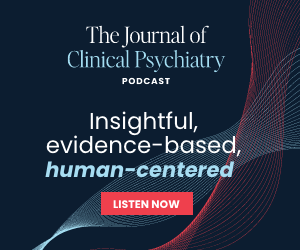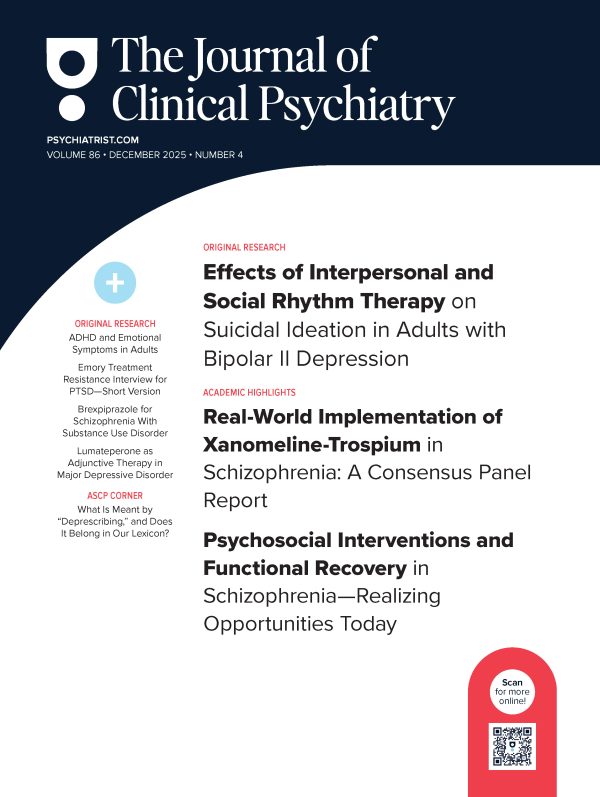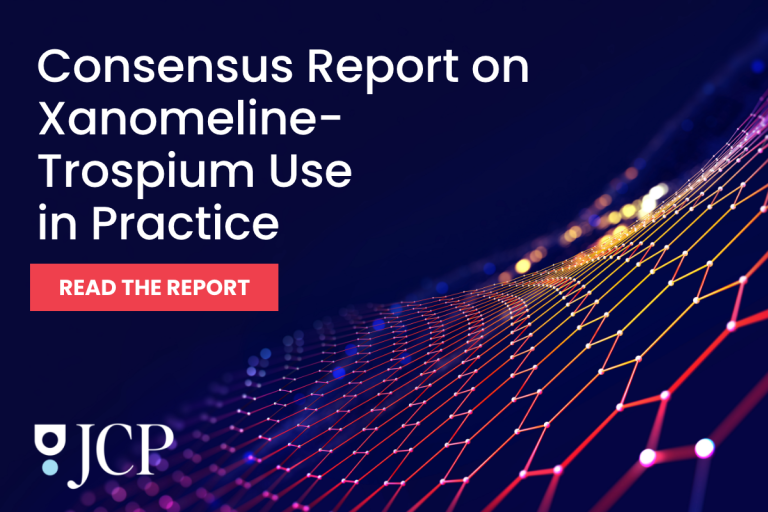
ABSTRACT
Background: Individuals with substance use disorders (SUDs) and co-occurring chronic health and/or psychiatric conditions face unique challenges in treatment and may be at a greater risk for suicidal ideation relative to persons with SUD alone.
Methods: In a sample of individuals entering residential SUD treatment in 2019 and 2020 (N = 10,242), we tested adjusted and unadjusted associations between suicidal ideation and (1) psychiatric symptoms and (2) chronic health conditions at treatment intake and during treatment using logistic and generalized logistic models.
Results: Over a third of the sample endorsed suicidal ideation at intake, though the prevalence of suicidal ideation decreased during treatment. In both adjusted and unadjusted models, individuals who reported past-month self-harm, those who reported a lifetime suicide attempt, and individuals who screened positive for co-occurring anxiety, depression, and/or posttraumatic stress disorder were at elevated risk of endorsing suicidal ideation at intake and during treatment (P values < .001). In unadjusted models, chronic pain (odds ratio [OR] = 1.51, P < .001) and hepatitis C virus (OR = 1.65, P < .001) were associated with an elevated risk for suicidal ideation at intake, and chronic pain was associated with elevated risk for suicidal ideation during treatment (OR = 1.59, P < .001).
Conclusions: Increasing accessibility to integrated treatments (ie, those that address psychiatric and chronic health conditions) for patients experiencing suicidal ideation may be beneficial in residential SUD treatment settings. Developing predictive models to identify those most at risk of suicidal ideation in real time remains a relevant direction for future work.
Members Only Content
This full article is available exclusively to Professional tier members. Subscribe now to unlock the HTML version and gain unlimited access to our entire library plus all PDFs. If you’re already a subscriber, please log in below to continue reading.
References (41)

- Schneider B. Substance use disorders and risk for completed suicide. Arch Suicide Res. 2009;13(4):303–316. PubMed CrossRef
- Thompson RG Jr, Alonzo D, Hu MC, et al. Substance use disorders and poverty as prospective predictors of adult first-time suicide ideation or attempt in the United States. Community Ment Health J. 2017;53(3):324–333. PubMed CrossRef
- Wilcox HC, Conner KR, Caine ED. Association of alcohol and drug use disorders and completed suicide: an empirical review of cohort studies. Drug Alcohol Depend. 2004;76(suppl):S11–S19. PubMed CrossRef
- Faberman R. Alcohol and Drug Misuse and Suicide and the Millennial Generation - A Devastating Impact, Pain in the Nation: Building a National Resilience Strategy. Trust for America’s Health and Well Being Trust. Wellbeingtrust.org website. https://wellbeingtrust.org/wp-content/uploads/2019/06/TFAH-2019-YoundAdult-Pain-Brief-FnlRv.pdf. Published 2019.
- Han B, Compton WM, Einstein EB, et al. Intentional drug overdose deaths in the United States. Am J Psychiatry. 2022;179(2):163–165. PubMed CrossRef
- Poorolajal J, Haghtalab T, Farhadi M, et al. Substance use disorder and risk of suicidal ideation, suicide attempt and suicide death: a meta-analysis. J Public Health (Oxf). 2016;38(3):e282–e291. PubMed CrossRef
- Borges G, Bagge CL, Cherpitel CJ, et al. A meta-analysis of acute use of alcohol and the risk of suicide attempt. Psychol Med. 2017;47(5):949–957. PubMed CrossRef
- Hubers AAM, Moaddine S, Peersmann SHM, et al. Suicidal ideation and subsequent completed suicide in both psychiatric and non-psychiatric populations: a meta-analysis. Epidemiol Psychiatr Sci. 2018;27(2):186–198. PubMed CrossRef
- Rossom RC, Coleman KJ, Ahmedani BK, et al. Suicidal ideation reported on the PHQ9 and risk of suicidal behavior across age groups. J Affect Disord. 2017;215:77–84. PubMed CrossRef
- Bassiony M, Saleem D, Khalil Y, et al. Suicide risk and ideation among patients with substance use disorders in Egypt. J Subst Use. 2022;27(6):667–673. CrossRef
- Roy S, Ninkovic J, Banerjee S, et al. Opioid drug abuse and modulation of immune function: consequences in the susceptibility to opportunistic infections. J Neuroimmune Pharmacol. 2011;6(4):442–465. PubMed CrossRef
- Connery H, Korte F, McHugh R. Suicide and substance use disorder. Psychiatr Ann. 2020;50(4):158–162. CrossRef
- Ortíz-Gómez LD, López-Canul B, Arankowsky-Sandoval G. Factors associated with depression and suicide attempts in patients undergoing rehabilitation for substance abuse. J Affect Disord. 2014;169:10–14. PubMed CrossRef
- Andersson HW, Lilleeng SE, Ruud T, et al. Suicidal ideation in patients with mental illness and concurrent substance use: analyses of national census data in Norway. BMC Psychiatry. 2022;22(1):1. PubMed CrossRef
- Landheim AS, Bakken K, Vaglum P. What characterizes substance abusers who commit suicide attempts? Factors related to Axis I disorders and patterns of substance use disorders: a study of treatment-seeking substance abusers in Norway. Eur Addict Res. 2006;12(2):102–108. PubMed CrossRef
- Levola K, Laine R, Pitkanen T. In-patient psychiatric care and non-substance-related psychiatric diagnoses among individuals seeking treatment for alcohol and substance use disorders: associations with all-cause mortality and suicide. Br J Psychiatry. 2022:221(1)386–393. PubMed CrossRef
- Kelly LM, Rash CJ, Alessi SM, et al. Correlates and predictors of suicidal ideation and substance use among adults seeking substance use treatment with varying levels of suicidality. J Subst Abuse Treat. 2020;119:108145. PubMed CrossRef
- Daray FM, Goldmann E, Gutierrez L, et al. Suicidal ideation is associated with cardiovascular disease in a large, urban cohort of adults in the Southern Cone of Latin America. Gen Hosp Psychiatry. 2019;57:34–40. PubMed CrossRef
- Moazzami K, Garcia M, Young A, et al. Association between symptoms of psychological distress and cognitive functioning among adults with coronary artery disease. Stress Health. 2021;37(3):538–546. PubMed CrossRef
- Moazzami K, Dolmatova EV, Feurdean M. Suicidal ideation among adults with cardiovascular disease: The National Health and Nutrition Examination Survey. Gen Hosp Psychiatry. 2018;51:5–9. PubMed CrossRef
- Ashrafioun L, Saulnier KG, Allan NP, et al. Pain intensity trajectories among veterans seeking mental health treatment: association with mental health symptoms and suicidal thoughts and behaviors. J Affect Disord. 2022;297:586–592. PubMed CrossRef
- Cho S, Hwang H, Lee JH. Pain intensity and suicidal ideation of people in chronic pain: mediating effects of depression. Soc Behav Personal. 2013;41(3):509–516. CrossRef
- Pelton M, Ciarletta M, Wisnousky H, et al. Rates and risk factors for suicidal ideation, suicide attempts and suicide deaths in persons with HIV: a systematic review and meta-analysis. Gen Psychiatr. 2021;34(2):e100247. PubMed CrossRef
- Huhn AS, Hobelmann JG, Ramirez A, et al. Trends in first-time treatment admissions for older adults with alcohol use disorder: availability of medical and specialty clinical services in hospital, residential, and outpatient facilities. Drug Alcohol Depend. 2019;205:107694. PubMed CrossRef
- Ellis JD, Rabinowitz JA, Wells J, et al. Latent trajectories of anxiety and depressive symptoms among adults in early treatment for nonmedical opioid use. J Affect Disord. 2022;299:223–232. PubMed CrossRef
- Ware OD, Ellis JD, Dunn KE, et al. The association of chronic pain and opioid withdrawal in men and women with opioid use disorder. Drug Alcohol Depend. 2022;240:109631. PubMed CrossRef
- Hagan H, Des Jarlais DC. HIV and HCV infection among injecting drug users. Mt Sinai J Med. 2000;67(5-6):423–428. PubMed
- Kroenke K, Spitzer RL, Williams JB. The PHQ-9: validity of a brief depression severity measure. J Gen Intern Med. 2001;16(9):606–613. PubMed CrossRef
- Spitzer RL, Kroenke K, Williams JB, et al. A brief measure for assessing generalized anxiety disorder: the GAD-7. Arch Intern Med. 2006;166(10):1092–1097. PubMed CrossRef
- Lang AJ, Stein MB. An abbreviated PTSD checklist for use as a screening instrument in primary care. Behav Res Ther. 2005;43(5):585–594. PubMed CrossRef
- Posner K, Brent D, Lucas C, et al. Columbia-Suicide Severity Rating Scale (C-SSRS). New York, NY: Columbia University Medical Center; 2008:10.
- Van Orden KA, Witte TK, Cukrowicz KC, et al. The interpersonal theory of suicide. Psychol Rev. 2010;117(2):575–600. PubMed CrossRef
- Kelly LM, Drazdowski TK, Livingston NR, et al. Demographic risk factors for co-occurring suicidality and cannabis use disorders: Findings from a nationally representative United States sample. Addict Behav. 2021;122:107047. PubMed CrossRef
- Borges G, Bagge CL, Orozco R. A literature review and meta-analyses of cannabis use and suicidality. J Affect Disord. 2016;195:63–74. PubMed CrossRef
- Delforterie MJ, Lynskey MT, Huizink AC, et al. The relationship between cannabis involvement and suicidal thoughts and behaviors. Drug Alcohol Depend. 2015;150:98–104. PubMed CrossRef
- Linehan M. DBT Skills Training Manual. Guilford Publications; 2014.
- Riblet NB, Kenneally L, Shiner B, et al. Health care processes contributing to suicide risk in veterans during and after residential substance abuse treatment. J Dual Diagn. 2019;15(4):217–225. PubMed CrossRef
- Golden J, O’Dwyer AM, Conroy RM. Depression and anxiety in patients with hepatitis C: prevalence, detection rates and risk factors. Gen Hosp Psychiatry. 2005;27(6):431–438. PubMed CrossRef
- Garland EL, Thomas E, Howard MO. Mindfulness-oriented recovery enhancement ameliorates the impact of pain on self-reported psychological and physical function among opioid-using chronic pain patients. J Pain Symptom Manage. 2014;48(6):1091–1099. PubMed CrossRef
- Garland EL, Roberts-Lewis A, Tronnier CD, et al. Mindfulness-oriented recovery enhancement versus CBT for co-occurring substance dependence, traumatic stress, and psychiatric disorders: Proximal outcomes from a pragmatic randomized trial. Behav Res Ther. 2016;77:7–16. PubMed CrossRef
- Harney BL, Brereton R, Whitton B, et al. Hepatitis C treatment in a co-located mental health and alcohol and drug service using a nurse-led model of care. J Viral Hepat. 2021;28(5):771–778. PubMed CrossRef





